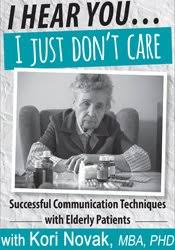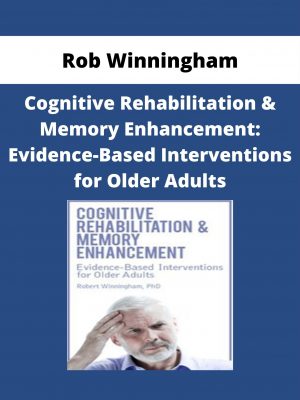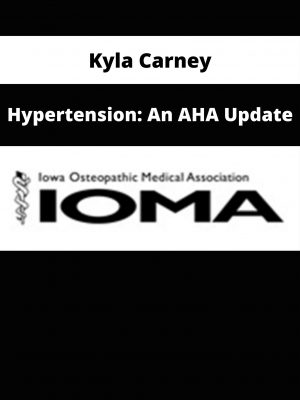Kori Novak – Successful Communication Techniques with Elderly Patients
$219 Original price was: $219.$62Current price is: $62.
Shopping Instructions:
- DISCOUNT 15% : SHOP15
- Product Delivery: Within 1 – 12 hours after purchase.
Available for Pre-Order. This product will be available within a few days.
Kori Novak – Successful Communication Techniques with Elderly Patients
Description:
- Successfully Communicating with Dementia and Alzheimer’s Patients
- Understanding How Elders Read Body Language
- Communicating with Families…hellooooo HIPAA
- Communicating with Difficult Patients
- Better Communication = Better Outcomes
Communicating with elderly patients can be daunting, even more so when you find you have to repeat yourself because they are hard of hearing or have dementia. Unfortunately, there are many under the misconception that when communicating with elderly patients, louder means better, and that a nod means, “uh huh, I understand.” With a rapidly increasing elderly population, there is an escalating need for healthcare professionals to learn how to effectively communicate with these patients. It isn’t just about being louder or clearer, but HOW we communicate with these generations that makes communication successful…or not.
Don’t miss this opportunity to learn tricks and tips from a Gerontologist who has “heard” it all from her patients. Leave understanding how to create happier, healthier, more informed elderly patients without blowing out their ear drums. Happier patients equal more compliant patients, better health outcomes for them and improved patient and family satisfaction scores for you.
OUTLINE
COMMUNICATING WITH THE ELDERLY
- Differences in Elder Patients
- What you Say …What they HEAR
- Body Language
COMMUNICATION TECHNIQUES
- Not LOUDER – Smarter
- Using Appropriate Vocabulary
- The Power of Touch
COMMUNICATING WITH FAMILIES
- Effective Conversations during Emotional Situations
- Breaking Bad News to Families
- Dealing with the Angry Family
- Family Dynamics
- Family Communication Styles
PATIENTS WITH NEUROCOGNITIVE DISORDERS
- Special Considerations for:
- Dementia
- Alzheimer’s Disease
- Parkinson’s Disease
- Mental Illness
Would you like to receive Kori Novak – Successful Communication Techniques with Elderly Patients ?
COMMUNICATING WITH SPECIAL POPULATIONS
- Non-Verbal Patients
- Mentally Ill Patients
- Inmates
BETTER COMMUNICATION TRANSLATES INTO BETTER OUTCOMES
- Deciphering the Numerous Quality Measures
- National Committee for Quality Assurance (NCQA)
- Healthcare Effectiveness Data and Information Set (HEDIS) Scores
- Clinical Quality Improvement (CQM)
- Patient & Family Satisfaction
- Compliance & Adherence
PUTTING IT ALL INTO PRACTICE
- Creating Communication Plans
- Staff Training
- Best Practices
OBJECTIVES
- Explain how communicating with the elderly differs from communicating with other patients.
- Contrast the different types of communication styles the elderly often use and respond to.
- Distinguish good communication techniques and poor communication techniques.
- Evaluate best practice ways to communicate with patients with degenerative neurocognitive disorders.
- Assess how better communication with elderly patients translates into higher NCQA/HEDIS scores as well as other quality measurement instruments.
- Formulate different communication plans for different types of patients.
- Discuss the differences between aberrant behaviors, mental illness and degenerative neurocognitive disorders.
- Demonstrate effective communication techniques with special populations such as mentally ill, inmates, and non-verbal patients
Related products
HEALTH & MEDICAL
HEALTH & MEDICAL
HEALTH & MEDICAL
Gaia—Creating-High-Voltage-Health-with-Glenn-Streeter-Open-Minds
HEALTH & MEDICAL
HEALTH & MEDICAL
HEALTH & MEDICAL
HEALTH & MEDICAL
Bernadette Giorgi – Attitude Ballet & Pilates Fusion – Just B Method












